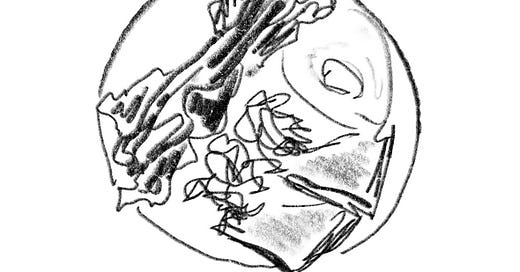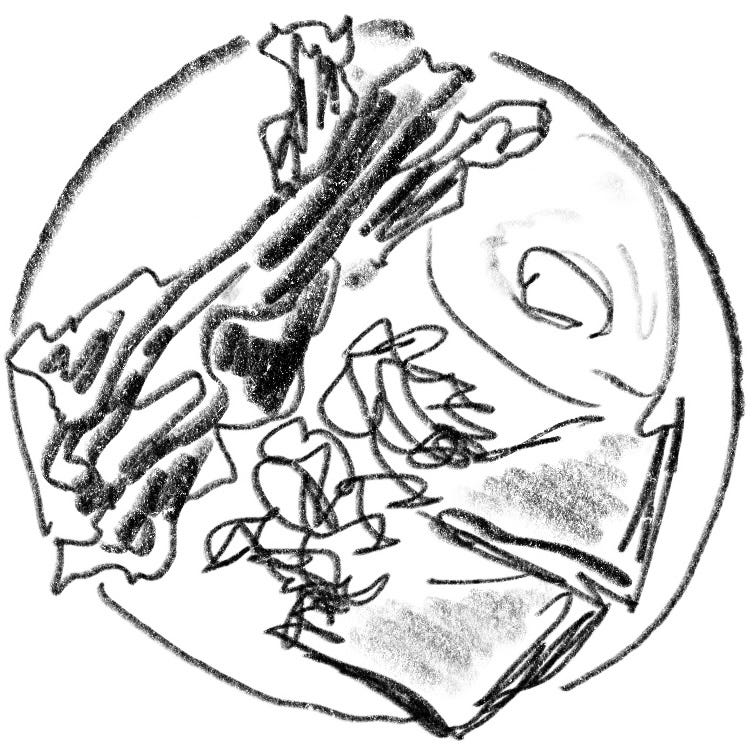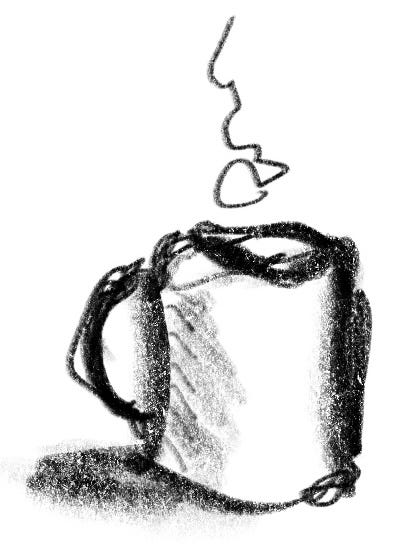The Oregon Trail Diner
Breakfasting in the rural west is best done in a certain kind of establishment.
The tiny slip of paper that the front desk gave me listed the most unusual combination of offerings: two biscuits, no gravy. One egg, one piece of toast. A single pancake. In italics, bolded on the bottom of the postage stamp coupon: Coffee not included. It was like reading a carefully negotiated list of things that would technically still qualify as breakfast but lacked the soul of the meal, like breakfast had gotten divorced and its spouse walked away with everything. The soylent green of breakfasts.
I found the diner on my way home to Seattle after a few weeks in the desert. There’s not a lot of lodging in Baker City, Oregon, and I picked this place (the Oregon Trail Motel and Restaurant) because the reviews of the breakfast were consistently glowing, and I love eating at diners. I don’t usually go for breakfast, and that’s because my absolute favorite thing to eat at a diner is a BLT. I love it all: the cardboard bread, the flavorless iceberg lettuce, the haphazard pile of potato chips, slightly overdone mayonnaise, the little pieces of tomato that inevitably slip out of the sandwich and wither on the plate. And the diagonal cut! Let us never take for granted a diagonal cut sandwich. I don’t usually go for breakfast, but on this day I did, my interest piqued by the reviews and the tiny coupon and its detailed mandate.
A lot of restaurants these days, especially breakfast ones, are in the same type of space: one with a big flat glass storefront, a commercial grade black metal door handle, and some plastic printed signage in a Microsoft Word default font. It’s not a very tactile experience. Things ain’t built the way they used to be, and when you walk into an old building, you can tell how much better it feels than its contemporaries. At the diner it started with the door handle, a hulking rectangle of polished steel covered in a 1960’s grid-like pattern that’s coming back into style. There’s better flow in old buildings, and when I walked into the diner I stood in the perfect position to survey the whole place, directly in line with the long row of counter seating that was punctuated at the far end of the room with a big booth, a three-quarters curved one, a booth for families or soccer teams or a group of friends.
I slide across an emerald green vinyl seat, carefully lifting myself over the cracked hole in the middle and strategically situating my body so that instead of sitting underneath the massive elk taxidermy in the middle of the room I was just to the left of it and able to admire it in its full glory. I took in the scene, my delight growing with every new detail, because this, this was a diner where people were. There were real people, people with backstories and regular orders and decades-long relationships with the place.
I took a white container of pasteurized half and half from an overflowing bowl sitting on the table and tipped it into a mug of weak coffee that I never managed to drink lower than halfway because my waitress- a slip of a woman with a practical ponytail and big 1980’s glasses- refilled it constantly, gliding around the restaurant so effortlessly I could have sworn she was on roller skates. On the wall hung five clocks for different time zones, their selected cities conveying so much about how the town saw itself and the world: Anchorage, Baker, Boise, Omaha, New York. Baker wasn’t the only thing out of place. The taxidermy was mostly a who’s-who of local creatures- elk, deer, antelope, salmon, sturgeon, crappie- save for one juvenile marlin, someone’s vacation souvenir that found its way to a place of honor at their local eatery.
Outside were several bird feeders that (in classic bird feeder fashion) had more squirrel visitors than avian ones. A little girl a few tables over squealed with delight when they scurried along the windowsills arguing over their spoils. In lieu of children’s menus a massive stack of coloring books sat behind the counter, and the girl scribbled away happily on a few ripped out pages while her parents decided on breakfast. I perused the menu- a massive thing clad in green plastic that hit the table with a resounding thud like an encyclopedia once I’d decided on food (a classic breakfast plate: eggs, toast, bacon. When in Rome.) I then unwrapped a crisp paper napkin from silverware so flat you could convince me it was manufactured by laying fork-shaped metal on train tracks and waiting for a locomotive to come by, and prepared myself for the big reveal.
A few minutes later my food was set down triumphantly in front of me, and I dug in. The bacon was so crispy it looked like it had gone through atmospheric re-entry, and the lacy edges of the egg I sliced in half with my fork were the kind only possible when you make food on a very hot, very greasy industrial griddle, one that sizzled pleasantly in the background as I ate. The faux wood table shone with a faint glow, its browns so perfectly of a bygone era that I almost think faux wood today is actually trying to copy the faux wood of yesterday, not the grain of real trees. I sipped ice water from a brown plastic cup, a diner staple. I think that If you collected a sample of microplastic from the middle of the ocean and put it under a microscope all you would see is miniature versions of those cups, plastic’s final form.
I settled my bill and got up to leave, passing by the pièce de résistance on my way out- a slowly revolving case of pie slices, each expertly packaged in cling wrap folded so neatly they’d probably pass inspection in the army. I drove away nostalgic for the place before the covered wagon on the sign had even disappeared from my review mirror, and pondered the diner for many miles as I made my way through the Willamette Valley, the end of the line for the Oregon Trail and the many people who passed through Baker along it so many years ago.
My own trip home was coming to a gentle end, the enthusiastic sheen of spring rising around me as I drove. Apple orchards were heavy with blossoms, and my continued journey northwest yielded increasingly more impressive views of familiar volcanic faces- Hood, Adams, Rainier. A flock of American pelicans passed overhead, their bright white bodies glowing in the sunshine, traveling just barely into the tip top corner of their range in southeastern Washington to bring us longer days, couriers out on a special delivery.
My work lately:
I have an essay about going for an unintentional swim in the Grand Canyon coming out this summer in Deep Wild, a journal filled with stories about places where there are no roads. You can pre-order it now for delivery in June on their website. I love the cover image!
Other ways to connect:





